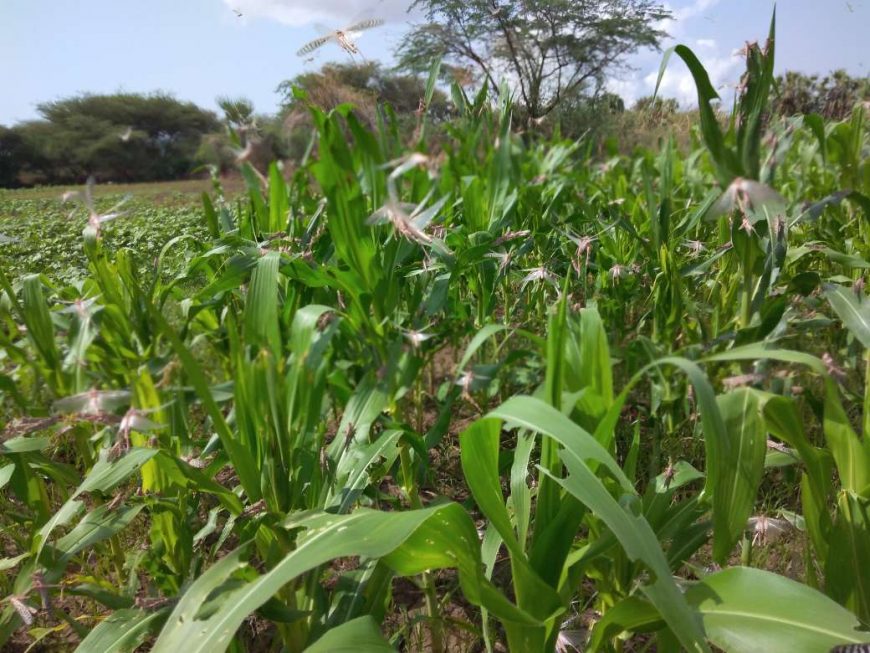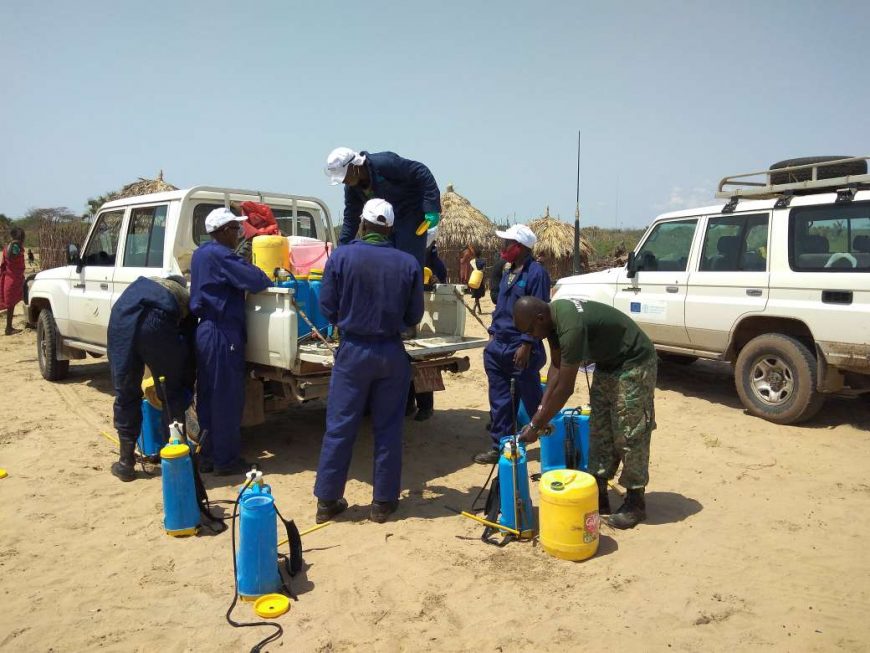ACTED is supporting the establishment of desert locust surveillance and control teams, supporting the efforts in ensuring that the desert locust invasion is controlled effectively in four affected counties in Kenya, including Turkana.
In the affected areas, desert locusts pose a great risk to food security, not only for people but for their livestock as well. With support from FAO, ACTED is supporting trained scouts across Turkana county to enhance the early warning mechanism for desert locust control, supporting control and surveillance operations to increase the resilience of livelihoods to threats and crises.

The worst desert locust crisis in 70 years
The Desert Locust is considered the most destructive migratory pest in the world, as it is highly mobile and feeds on large quantities of any kind of green vegetation, including crops, pasture/browse and fodder. Kenya is currently experiencing a Desert Locust upsurge, the worst the country has seen in 70 years. The first swarms appeared in the northeast region, spreading rapidly at an alarming rate, threatening livelihoods and food security of an already vulnerable population in several counties.
Alleviating food security threats
Over the past five months, the threat to food security has been growing as second generation desert locusts hatch into disastrous marching hoppers bands, and flying swarms, including in Turkana. In order to address the pressing needs brought about by the desert locust invasion, ACTED is supporting the establishment of 126 desert locust county management teams to ensure surveillance and control efforts are ongoing in Marsabit, Turkana, Elgeyo Marakwet and Baringo Counties of Kenya.
|
I normally received messages from my fellow villagers when they site the locust. After which, I notify the ward surveillance officer who comes and conducts a verification. If the swarm or bands are confirmed, control is organized. In addition, since I have a smartphone, I report the siting by documenting the instar stage, the location and size of the affected area. All these reports are normally uploaded into the E-Locust3M app.
Working with the community scouts who have good geographical knowledge of the area, the data collected is uploaded and collected to inform decision making and the trend analysis. This supports the desert control efforts in the areas they are spotted, enhancing early warning mechanisms for desert locust control. Over the past five weeks, ground control team have been in the area covering over 1,026 acres of land, spraying with hand pumps and motorized sprayer. This is further complemented by air control targeting flying swarms in hard to reach areas. A standard ground control team is composed of 8 National Youth Service (NYS) Officer, 1 Surveillance Officer, 1 Control Officer, and 3 scouts within the ward.
